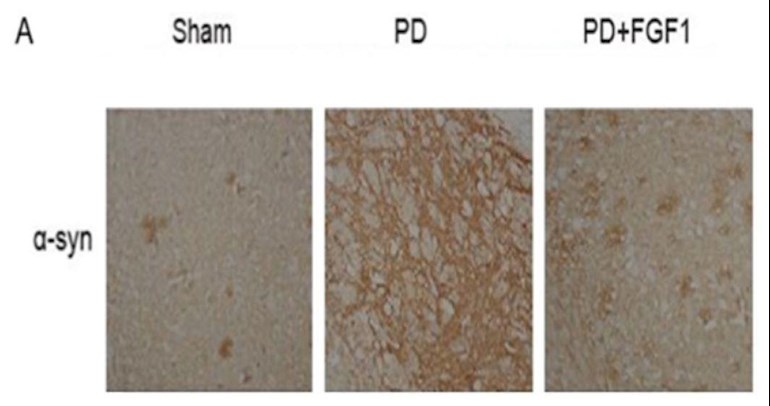I posted earlier on preclinical findings that our growth factor drug (human FGF-1) can regenerate new dopamine-secreting neurons in a primate model of PD. This led to a significant improvement in motor skill functioning of the monkeys. I would now like to share data with you that FGF-1 can also decrease levels of the toxic aggregated alpha-synuclein protein, which is a hallmark of PD in humans.
In the figure below you can see brain slices through the substantia nigra region in an experimental animal model of Parkinson's disease. In the middle panel you can see the strands of aggregated synuclein which are known to be toxic to surrounding neurons. In the far right panel you can see the same area of the brain after two weeks of daily IV treatment with FGF-1 with a clearly visible decrease in synuclein tangles.
We believe we are attacking the two root causes of PD with our drug therapy, namely, by regenerating functional dopamine-secreting neurons as well as elimination of toxic aggregates of the alpha-synuclein protein.
Please follow us as we move into our clinical trials with this promising drug candidate.
